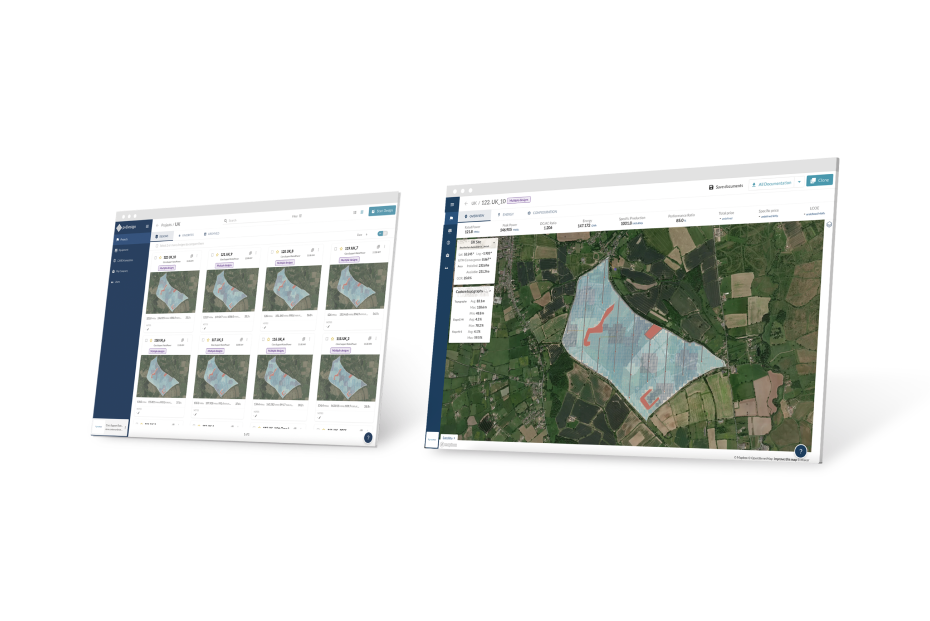
PV Tech and RatedPower are co-hosting a webinar that will look at their software tool for planning utility-scale PV plants digitally – pvDesign. To register for the webinar, which takes place at 15:00 PM (BST) on 5 September, please click here.
Problem
The decarbonisation of the electricity grid has become more important than ever to achieve energy security and reduce dependence on fossil fuels. On top of this, permitting and regulation, the increase in material costs, and the current energy turmoil make it more challenging and time-consuming for renewable energy professionals to complete the design and engineering process in an efficient and quick manner.
Try Premium for just $1
- Full premium access for the first month at only $1
- Converts to an annual rate after 30 days unless cancelled
- Cancel anytime during the trial period
Premium Benefits
- Expert industry analysis and interviews
- Digital access to PV Tech Power journal
- Exclusive event discounts
Or get the full Premium subscription right away
Or continue reading this article for free
Some companies also lack the skills or staff to do basic engineering and design in house and therefore may need to outsource these tasks. Banks and funds who lack technical expertise but want to know the long term yields of solar sites may also need to get external help to calculate these values. Deploying pvDesign enables teams do all this work in-house.
Product Outline
RatedPower’s pvDesign software automates and optimises the study, analysis, design, and engineering of photovoltaic plants in all its stages. It helps companies optimise the design and engineering of utility-scale solar PV plants, maximise their profitability, and reduce energy costs (LCOE). The software has reportedly reduced the LCOE of solar plants designed with it by 5%, which translates to a 20% higher solar plant profitability.
pvDesign optimises design and carries out the engineering of utility-scale solar photovoltaic plants, reducing 85% of the time spent in designing PV, from 4-6 weeks to under 2 minutes.
Solution
pvDesign aims to not only accelerate the whole process through automation, but also solve these challenges by making it easier to be ahead of other companies when submitting projects, allowing users to modify and add any parameters to fit the regulations any time and compare designs with different inputs in order to achieve the most optimal configuration.
The software is used by companies like BayWa r.e., who said “Without pvDesign all the requests from our developer and project managers went directly into our engineering team. This created a lot of work, especially since it involved a lot of going forward and backwards regarding new land plots, a boundary change here or a gaspipe there. With pvDesign both developers and project managers can do a quick pre-estimation of the solar projects—power on site and yield—by themselves, before going to the engineering team for the more detailed planning.”
Applications
The product is ideal for developers, EPCists, engineering firms and bank funds. It helps developers to reduce time when manually optimising PV plant designs and calculating energy yields, as well as gather all apps and documents to apply for permits in one app.
For EPCists, it is useful to add or modify any inputs or items in the project itself, as pvDesign makes it very easy to iterate designs and automatically adjust the whole report with one click. Engineering firms need it to carry out basic or detailed engineering and meet urgent deadlines for clients’ orders.
Banks and funds can use the software to have a clear and accurate yield estimate of the PV infrastructure impacts the projects’ financial success, as pvDesign can help bridging the gap between solar developers and lenders with well documented plant performance analysis.

Platform
pvDesign is a cloud-based software available for all types of users as well as systems. As it works on the cloud, there is no need to download any program or have a computer with technical characteristics. Click here to watch a demo. The software is in constant development, and it has recently incorporated a new feature to apply different input strategies to get the most out of the terrain. Users are now able to define the civil and power inputs per area. It is also possible to check all pvDesign updates by month here.
Availability
RatedPower’s software has been available since 2017.






